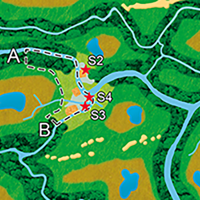
Nathalie Brusgaard / @[email protected]
@natbrusgaard
Followers
4K
Following
5K
Media
346
Statuses
2K
Archaeologist, Prehistorian | All things animal - ancient and modern | Active in N Europe & the Middle East | Assistant Professor @LeidenArchaeo #WomeninSTEM
Joined September 2019
New evidence for early cattle herding in N Europe 🐄Our research is out in @AntiquityJ.A 🧵on what we discovered about hunter-gatherers, farmers and cows. Spoiler: we found 2 different herds of cattle! 1/.@FacultyofArtsUG @UniLeidenNews @NWONieuws .
cambridge.org
Early animal management in northern Europe: multi-proxy evidence from Swifterbant, the Netherlands - Volume 98 Issue 399
3
17
72
RT @Sofie_Helleroe: First week as a 27 y/o and first time ever submitting an application for a PhD position 🎓. It’s been hectic, people!….
0
1
0
RT @FlintDibble: I have no way to get in touch with Keanu Reeves. I invite him to have a frank conversation with me about archaeology. I be….
0
210
0
RT @AntiquityJ: It was great to meet Antiquity author Nathalie Brusgaard in person at #EAA2024! .Check out her article on early animal mana….
cambridge.org
Early animal management in northern Europe: multi-proxy evidence from Swifterbant, the Netherlands - Volume 98 Issue 399
0
3
0
#EAA2024 was a blast. I was also very happy to leave with a copy of the June Antiquity issue our article was published in thanks to @AntiquityJ! Always nice to see your article in print 😁
0
0
20
It was a lot of fun presenting our elk project at #EAA2024 at the Bronze Age animal session organised by @ANSOC_ERC. Such a great session too, I left feeling very inspired! @JoycevanDijk5, Jordy Aal and I will be back with more results soon I hope!
0
2
36
#EAA2024 off to a great start yesterday with a visit to the amazing Roman forum with @Cetoarchaeology followed by the welcome reception there. Though I think the organisers underestimated how many archaeologists would want to have a drink in this spectacular location 😂
0
0
4
Haven't been very active on here (Twitter isn't what it used to be. ) but I'm getting connected again for @archaeologyEAA conference Rome! Looking forward to hopefully seeing many of you this week?! 🤩
1
0
15
RT @OmroepFlevoland: Swifterbant - Is Swifterbant de bakermat van de veeteelt en de landbouw?
omroepflevoland.nl
Is Swifterbant de bakermat van de veeteelt en de landbouw in Nederland? Je zou het bijna denken. Archeologen van de Rijksuniversiteit Groningen en Leiden hebben dierlijk botmateriaal dat al in de...
0
2
0
RT @CSLyons: The moment I’ve dreamed of for years is here: my first-ever book is out with @BloomsburyBooks today. What does the return of….
0
72
0
RT @AntiquityJ: NEW Archaeologists discover evidence for the earliest cattle herds in northern Europe in the Netherlands, pushing dates for….
0
8
0
Zie mijn post voor een draadje over ons onderzoek (in het Engels) en het wetenschappelijk artikel voor meer details (open access!).
New evidence for early cattle herding in N Europe 🐄Our research is out in @AntiquityJ.A 🧵on what we discovered about hunter-gatherers, farmers and cows. Spoiler: we found 2 different herds of cattle! 1/.@FacultyofArtsUG @UniLeidenNews @NWONieuws .
0
0
0
De eerste runderkuddes in noord Europa 🐄 Ons onderzoek over vroege veeteelt in Nederland is uit. Het laat zien hoe complex veeteelt was al 6000 jaar geleden en dat er in Nederland een ander pad naar het boerenbestaan werd bewandeld. @nrc @nrcwetenschap.
nrc.nl
Archeologie: In Flevoland hielden jager-verzamelaars al rond 4240 voor Christus twee kuddes vee. De overstap naar landbouw begon hier vroeg.
1
3
4
Check out our article for all the details! And stay tuned because we've got more work on the cattle coming out (strontium!). And make sure also to take a look at all the cool research that's been done by the rest of the EDAN project @merimurica @ErvenJolijn @ZooArchGIA. 13/13.
0
0
8











